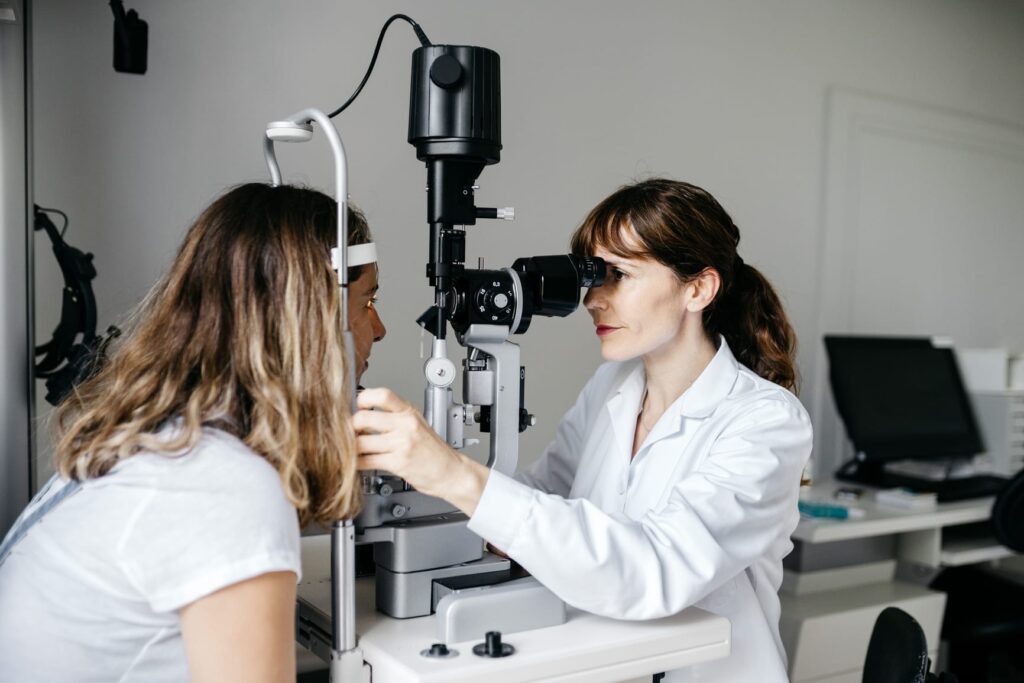Retinal diseases can have a significant impact on one’s vision and overall quality of life. Fortunately, advancements in medical technology have led to a variety of treatment options that can address these conditions and help preserve vision. Understanding the different treatment options available is crucial for individuals with retinal diseases. In this article, we will explore the various advanced retinal treatments that are currently available and discuss their benefits and potential impact on the future of retinal treatment.
Understanding Retinal Diseases
The retina plays a vital role in our ability to see. It is a thin layer of tissue located at the back of the eye that converts light into electrical signals, which are then sent to the brain. When the retina becomes damaged or diseased, it can lead to vision loss or impairment.
Retinal treatments have evolved significantly over the years. Advances in technology and medical research have paved the way for more effective and targeted interventions.
Early diagnosis of retinal diseases is crucial. Timely detection can make a significant difference in the effectiveness of treatment and the preservation of vision.
The Importance of Early Diagnosis
Early diagnosis allows for prompt intervention and can help prevent further damage to the retina. Regular eye examinations are essential, especially for individuals at a higher risk of developing retinal diseases, such as those with a family history or certain medical conditions.
By detecting retinal diseases in their early stages, healthcare professionals can recommend appropriate treatment options to slow down the progression of the disease and minimize vision loss.

Common Types of Retinal Diseases
Retinal diseases can manifest in various forms. Some common types include:
- Macular degeneration: This condition affects the macula, the central part of the retina responsible for sharp, detailed vision.
- Diabetic retinopathy: It occurs in individuals with diabetes and is caused by damage to the blood vessels in the retina.
- Retinal detachment: This occurs when the retina pulls away from the back of the eye, leading to a loss of vision.
These are just a few examples of the many retinal diseases that can affect individuals. Each condition requires a tailored treatment approach to address the specific needs of the patient.
Another common retinal disease is retinitis pigmentosa (RP). RP is a genetic disorder that causes the breakdown and loss of cells in the retina. This progressive disease often starts with night blindness and gradually leads to a loss of peripheral vision. While there is currently no cure for RP, there are treatment options available to manage the symptoms and slow down its progression.
Additionally, another retinal disease that affects individuals is central serous retinopathy (CSR). CSR occurs when fluid accumulates beneath the retina, causing distorted or blurred vision. This condition is often associated with stress, hormonal changes, or the use of certain medications. Most cases of CSR resolve on their own within a few months, but in some cases, treatment may be necessary to prevent long-term vision problems.
It is important to note that retinal diseases can affect people of all ages, from infants to the elderly. Some conditions, such as retinoblastoma, a rare form of eye cancer, primarily affect children. Early detection and treatment of retinal diseases in children are critical for preserving their vision and overall eye health.
In conclusion, understanding retinal diseases and the importance of early diagnosis is crucial for maintaining good eye health. Regular eye examinations and awareness of the common types of retinal diseases can help individuals seek timely treatment and minimize vision loss.
To learn more about retinal diseases click here.
The Evolution of Retinal Treatments
As our understanding of retinal diseases deepens, the landscape of treatment options continues to expand. The journey from traditional approaches to cutting-edge therapies has revolutionized the field of ophthalmology, offering new hope to patients facing various retinal conditions.
Traditional Retinal Treatments
Traditional retinal treatments, such as laser photocoagulation, have been employed for many years. This procedure uses laser therapy to seal leaking blood vessels in the retina or create scar tissue to prevent further damage. While effective in some cases, this approach may have limitations and potential side effects.
Despite their longstanding presence in the medical field, traditional retinal treatments are now being complemented by a wave of innovative techniques that are reshaping the way we approach retinal care.
The Shift Towards Advanced Treatments
In recent years, there has been a shift towards more advanced retinal treatments that offer improved outcomes and reduced risks.
One such treatment option is vitrectomy. This surgical procedure involves the removal of the vitreous gel, which is located in the back of the eye. By removing the vitreous gel, healthcare professionals can address retinal disorders such as retinal detachment or macular holes. Vitrectomy offers a higher success rate and faster recovery compared to traditional methods. Read more about Vitrectomy on https://my.clevelandclinic.org/health/treatments/24402-vitrectomy
Intravitreal injections have also emerged as a popular treatment modality. These injections deliver medication directly into the eye, targeting the source of the retinal disease. Medications such as anti-VEGF agents or steroids can help reduce inflammation, treat macular edema, and slow down the progression of certain retinal conditions.
With the advent of these advanced treatment modalities, ophthalmologists can now tailor their approach to each patient’s unique needs, offering personalized care that holds the promise of better outcomes and improved quality of life.
Exploring Advanced Retinal Treatments
Advanced retinal treatments are continually being developed to provide patients with better outcomes and a higher quality of life. Let’s delve into some of these treatment options in more detail.
Laser Therapy for Retinal Diseases
Laser therapy, also known as photocoagulation, remains a valuable tool in the treatment of retinal diseases. This technique uses a focused laser beam to target specific areas of the retina and seal leaking blood vessels. By precisely directing the laser energy, ophthalmologists can prevent further damage to the delicate retinal tissue.
Advancements in laser technology have also led to the development of selective laser trabeculoplasty (SLT). This innovative procedure uses laser energy to stimulate the drainage system of the eye, reducing intraocular pressure and managing glaucoma, a common comorbidity with retinal diseases. SLT offers a non-invasive alternative to traditional glaucoma surgeries, providing patients with a safer and more comfortable treatment option.
Vitrectomy: An In-depth Look
Vitrectomy is a surgical procedure that has revolutionized the field of retinal treatment. During vitrectomy, the vitreous gel, which fills the center of the eye, is removed and replaced with a clear solution to maintain the shape and function of the eye. This delicate procedure requires the skill and expertise of a highly trained retinal surgeon.
With the advent of microincisional vitrectomy surgery (MIVS), vitrectomy has become even more precise and minimally invasive. MIVS utilizes tiny incisions, often less than 1 millimeter in size, to access the vitreous cavity. This approach offers numerous advantages, including reduced postoperative discomfort, quicker recovery times, and minimal scarring. Patients can now experience the benefits of vitrectomy without the drawbacks associated with traditional open surgery.
Intravitreal Injections and Their Benefits
Intravitreal injections have become a mainstay of retinal treatment due to their ability to deliver medication directly to the source of the disease. These injections involve the administration of medication into the vitreous cavity of the eye, ensuring targeted and effective treatment.
Anti-VEGF agents have revolutionized the management of retinal conditions such as wet age-related macular degeneration (AMD) and diabetic macular edema (DME). These medications work by blocking the effects of a protein called vascular endothelial growth factor (VEGF), which promotes abnormal blood vessel growth and leakage in the retina. By inhibiting this process, anti-VEGF therapy can stabilize or improve vision and prevent further damage to the retina.
In addition to anti-VEGF agents, steroids and non-steroidal anti-inflammatory drugs (NSAIDs) are also used in intravitreal injections to reduce inflammation and manage macular edema caused by various retinal diseases. These medications help alleviate symptoms and improve overall retinal health.
As the field of retinal treatment continues to advance, patients can look forward to even more innovative and effective options. From laser therapy to vitrectomy and intravitreal injections, these treatments offer hope and improved outcomes for individuals living with retinal diseases. Click here to find more about intravitreal.
The Role of Medication in Retinal Treatment
Medication plays a crucial role in retinal treatment, often serving as a complement to invasive procedures or as a standalone therapy.

Steroids and Non-Steroidal Anti-Inflammatory Drugs
Steroids and NSAIDs are commonly prescribed in the treatment of retinal diseases. These medications help reduce inflammation, swelling, and fluid build-up in the retina, thereby improving vision and alleviating symptoms.
While effective, it is important to note that long-term use of steroids can have side effects, such as increased intraocular pressure or cataract formation. Regular follow-ups with healthcare professionals are essential to monitor the efficacy and safety of these medications.
Anti-VEGF Therapy
Anti-VEGF therapy has emerged as an innovative and effective treatment approach for retinal diseases associated with abnormal blood vessel growth. By blocking the effects of VEGF, these medications can prevent the progression of conditions such as wet AMD or DME, ultimately preserving vision and improving patient outcomes.
Anti-VEGF therapy may require ongoing treatment, with regular injections required to maintain the desired effect. Patients should work closely with their healthcare providers to develop a personalized treatment plan and to address any concerns or side effects that may arise.
Future of Retinal Treatments
The field of retinal treatments continues to evolve at a rapid pace. Ongoing research and development are bringing forth promising advancements that have the potential to revolutionize the management of retinal diseases.
Promising Developments in Retinal Treatment
Researchers are actively exploring the use of gene therapy as a potential treatment for inherited retinal diseases. By introducing healthy genes into the retina, it may be possible to correct genetic defects and slow down or prevent the progression of these conditions.
Furthermore, the integration of artificial intelligence (AI) technology in ophthalmology holds great promise. AI algorithms can analyze retinal images and aid in the early detection and diagnosis of retinal diseases, facilitating timely intervention and improving patient outcomes.
The Impact of Technology on Retinal Treatments
Advancements in technology have undoubtedly revolutionized the field of retinal treatments. From improved surgical techniques to targeted drug delivery systems, technology has enhanced the precision, safety, and effectiveness of retinal interventions.
Additionally, telemedicine platforms and remote monitoring devices allow for better access to specialized care, especially for individuals residing in remote areas or those with limited mobility. These technological advancements have the potential to improve patient outcomes, increase patient satisfaction, and reduce healthcare costs.
In conclusion, individuals with retinal diseases now have a range of advanced treatment options available to them. From traditional laser therapy to more innovative approaches like vitrectomy and intravitreal injections, advancements in retinal treatment have significantly improved patient outcomes and quality of life. The role of medication, such as steroids and anti-VEGF agents, cannot be overstated, as they play a crucial part in managing retinal diseases. As we look ahead, ongoing research and technological advancements offer hope for even more effective and personalized retinal treatments, ultimately bringing us closer to a future where retinal diseases can be effectively managed or even cured.

